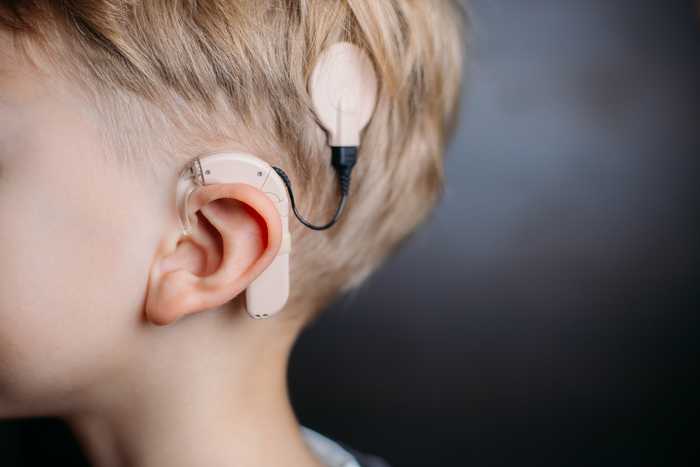A new study by researchers at NYU Langone Health suggests that stimulating the vagus nerve during training can improve perceptual learning in mice beyond normal limits.
Summary: Scientists found that vagus nerve stimulation helped mice continue improving their ability to distinguish musical tones even after regular training plateaued. The technique activated brain regions involved in attention, memory, and neuroplasticity.
Estimated reading time: 6 minutes
Researchers at NYU Langone Health have uncovered a potential method to enhance perceptual learning using vagus nerve stimulation. The study, published in Nature Neuroscience, demonstrates that this technique can help mice surpass typical learning limits in auditory discrimination tasks.
The Power of Vagus Nerve Stimulation
The vagus nerve, a major conduit between the brain and various organs, has long been a target for treating conditions ranging from epilepsy to depression. However, its potential to enhance perceptual learning had remained unclear until now.
In this study, researchers trained 38 mice to differentiate between musical tones. While all animals initially improved, those receiving vagus nerve stimulation continued to progress even after the control group plateaued. The stimulated mice made about 10% fewer errors on average and half as many mistakes on the most challenging tests.
Kathleen Martin, the study’s lead author and a graduate student at NYU Grossman School of Medicine’s Neuroscience Institute, explained the significance:
“Our findings suggest that activating the vagus nerve during training can push past the limits of what animals, and perhaps even humans, can learn to perceive.”
Unveiling the Mechanism
To understand how vagus nerve stimulation affects the brain, the researchers conducted further experiments. They discovered that the technique:
- Boosts activity in the cholinergic basal forebrain, an area crucial for attention and memory.
- Increases neuroplasticity in the auditory cortex, the brain’s primary hearing center.
These changes appear to facilitate long-term cellular adaptations, allowing newly acquired skills to persist well after training.
Implications for Human Health
The potential applications of this research extend far beyond enhancing musical abilities. Perceptual learning plays a vital role in language acquisition and adapting to cochlear implants, devices used to restore hearing.
Robert Froemke, PhD, the study’s senior author, highlighted the clinical potential:
“These results highlight the potential of vagus nerve stimulation to speed up hearing improvements from cochlear implants. By boosting perceptual learning, this method might make it easier for implant recipients to communicate with others, hear cars approaching, and engage more effectively with the world around them.”
Challenges and Future Directions
While the results are promising, several challenges remain:
- The vagus nerve is more complex in humans than in mice, potentially leading to different effects.
- Previous studies have shown mixed results, possibly due to the distracting nature of the electrical pulses used in the technique.
- The improvements took longer to manifest than initially expected, which may have contributed to past negative findings.
Despite these hurdles, the researchers plan to test vagus nerve stimulation in rodents with cochlear implants to assess its potential for improving device function.
The Road Ahead
This study opens new avenues for enhancing perceptual learning and potentially improving the lives of those with hearing impairments. As research progresses, we may see applications in various fields, from education to medical rehabilitation.
However, as Dr. Froemke cautions, further testing in human patients is necessary due to the differences between mouse and human vagus nerves. The journey from lab to clinic is often long and complex, but this research provides a promising starting point for future investigations.
Quiz: Test Your Understanding
- What was the primary focus of the study? a) Treating epilepsy b) Enhancing musical ability c) Improving perceptual learning d) Developing new cochlear implants
- How much did vagus nerve stimulation improve error rates in mice on average? a) 5% b) 10% c) 15% d) 20%
- Which brain region showed increased activity due to vagus nerve stimulation? a) Amygdala b) Hippocampus c) Cholinergic basal forebrain d) Cerebellum
Answers:
- c) Improving perceptual learning
- b) 10%
- c) Cholinergic basal forebrain
Further Reading
- Nature Neuroscience – Full Study
- NYU Langone Health Neuroscience Institute
- National Institutes of Health – Vagus Nerve Stimulation
Glossary of Terms
- Vagus Nerve: A major nerve connecting the brain to various organs in the body.
- Perceptual Learning: The process of improving one’s ability to interpret sensory information through experience.
- Neuroplasticity: The brain’s ability to form new neural connections and adapt to new experiences.
- Cholinergic Basal Forebrain: A brain region involved in attention and memory processes.
- Cochlear Implant: A neuroprosthetic device used to restore hearing in individuals with severe hearing loss.
- Auditory Cortex: The primary brain region responsible for processing auditory information.
Enjoy this story? Get our newsletter! https://scienceblog.substack.com/


